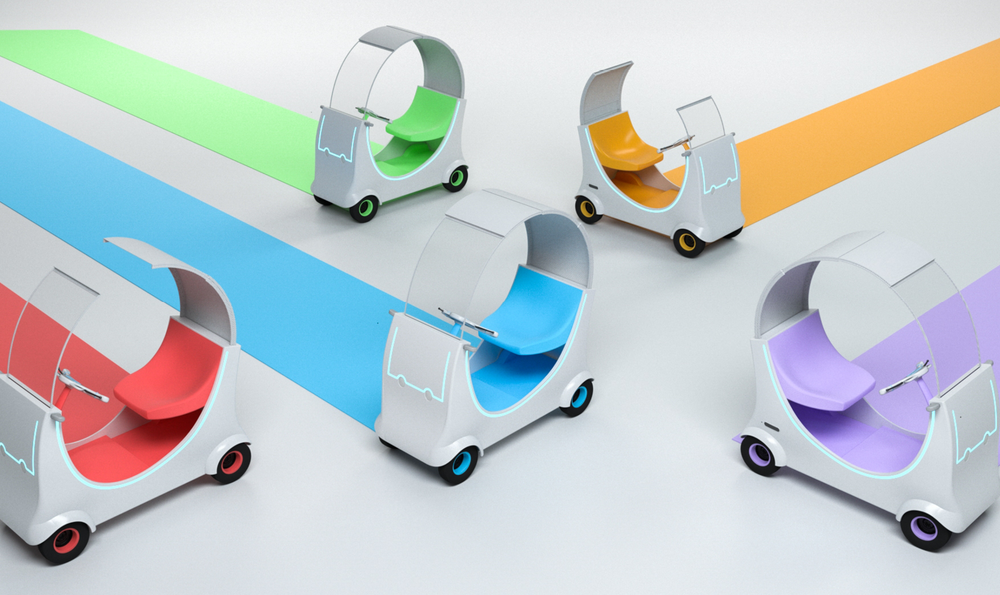The era of Smart Mobility is emerging as a catalyst for radical change in the transport sector, redefining the way people move around the city through advanced technologies and innovative solutions.

How Smart Mobility is transforming the transport sector
Date
29 April 2024
This smart mobility not only promises to make transport safer and more accessible, but also aspires to achieve fully sustainable systems aligned with global environmental goals by shaping the future of transport.
Introduction to Smart Mobility: Innovation and sustainability
Smart Mobility represents a revolutionary paradigm in the transport sector that aims to make travel more efficient and sustainable. Through the integration of advanced technologies, it aims to optimise the use of urban infrastructure while significantly reducing transport’s environmental impact. The objectives of this transformation include decreasing greenhouse gas emissions, improving urban air quality and increasing energy efficiency in transport.
This sphere encompasses a wide range of technological and infrastructural elements, such as smart parking spaces, charging networks, advanced traffic management, electric cars and bicycle lanes that work together to promote greener mobility. Additionally, smart mobility is also fuelled by the business models of the sharing economy and digital technologies, offering innovative services such as ride-sharing, car-sharing, and bike-sharin, all with the aim of reducing emissions and improving urban traffic.
This innovative way of moving around cities optimises transport efficiency by leveraging data management by promoting new business models and encouraging a more sustainable mobility strategy.
Key technologies in Smart Mobility
The technologies that define Smart Mobility are numerous and complex, each significantly contributing to the transformation of transport systems. The main technological tools adopted in this revolution include:
- Internet of Things (IoT): this technology allows vehicles to interact with each other and the road infrastructure in real time, ensuring more advanced and safer traffic management.
- Artificial intelligence: AI is essential for processing large volumes of data to optimise routes and travel times. Advanced AI systems can predict traffic conditions, suggest faster alternatives, and enhance the overall mobility experience.
- 5G: 5G technology plays a crucial role due to its high data transfer and low latency, which are critical for the effective operation of autonomous vehicles that require instantaneous communication to navigate safely in urban areas.
- Autonomous vehicles: AI-driven vehicles, supported by advanced sensors and predictive algorithms, can significantly reduce road accidents caused by human error and improve the efficiency of both individual and collective transport by offering customised and adaptive transport solutions.
Other emerging technologies, such as drones for urban deliveries and advanced traffic management and infrastructure monitoring systems contribute to an increasingly connected and automated transport ecosystem. These systems not only enhance urban mobility but also promote sustainability by optimising resource consumption and reducing emissions.
The Transdisciplinary Design notion plays a key role in integrating these technologies. This approach fosters synergistic interaction between disciplines such as sociology, psychology, interaction design, and engineering to develop mobility solutions that are both technologically advanced and socially responsible. The combination of different expertise enables the complexity of Smart Mobility to be addressed with a global vision, creating a transport ecosystem that meets the current and future needs of society.
The impact on urban mobility
Cities around the world are experiencing significant transformations through the adoption of Smart Mobility practices. Cities like London and Singapore have adopted this approach by promoting smart traffic systems and micro-mobility solutions such as bike-sharing and electric scooters. These approaches have effectively reduced traffic congestion and made urban mobility smoother and more accessible.
In addition to urban and environmental benefits, Smart Mobility also has a significant social impact. For example, on-demand transport systems and integrated navigation apps make transport more inclusive, supporting the most vulnerable members of the population such as the elderly and people with disabilities. Urban planning is thus designed to include real-time data in order to create cities that are more responsive and adaptive to citizens’ different needs.
Finally, smart mobility encourages greater integration between different means of transport, making it easier to switch from one mode to another with minimum inconvenience and maximum efficiency. This integrated approach improves the overall traveller experience while promoting a more balanced and sustainable use of urban resources.
The role of infrastructure and public policies
In order to realise the full potential of Smart Mobility, an active commitment to implement advanced infrastructure and effective public policies is essential. Investing in smart infrastructure, such as road sensors and high-tech public transport systems is crucial to support the transition to more efficient and sustainable mobility.
Similarly, public policies must promote the adoption of these technologies through incentives, clear regulations and targeted investments. These measures can accelerate the integration of Smart Mobility in cities, also fostering a positive social impact and ensuring access to the benefits of this innovation for all citizens.
The effective integration of technological advances with adequate regulatory and infrastructural support is crucial for the development of urban transport systems that are not only smarter, but also more accessible. This synergy allows the potential of emerging technologies to be fully exploited, ensuring that infrastructures are ready to support new modes of mobility and that regulations facilitate the safe and equal adoption of these technologies.
Future challenges and opportunities of Smart Mobility
Despite progress being made, Smart Mobility continues to face several significant challenges. Among these, data privacy and cybersecurity issues are particularly critical as they are essential to maintain and strengthen public trust in new technologies. For this reason, secure management of personal information and protection against cyber attacks are top priorities to prevent misuse and ensure user safety.
Another challenge is resistance to change from traditional industries and certain members of society that may be sceptical or intimidated by new technologies. Such resistance may develop together with long decision-making periods when adopting new systems, or through active opposition, making the introduction of certain innovative solutions more complex.
Despite these obstacles, the future opportunities offered by smart mobility are immense and promising. The continuous evolution of technologies could, while already doing so, radically transform the transport sector. It could further improve the efficiency and sustainability of transport systems on a global scale, unlocking new business opportunities as well.
Continued research and development in this area not only promises to improve existing infrastructure but also to create new markets and professions by stimulating the economy and promoting more accessible and inclusive mobility for everyone.
Are you interested in smart mobility and would you like to turn this passion into a career? Learn about the skills needed to design smart and sustainable mobility solutions with these IED courses. Our courses combine theory and practice, allowing you to develop real projects and prepare you for the working world.








